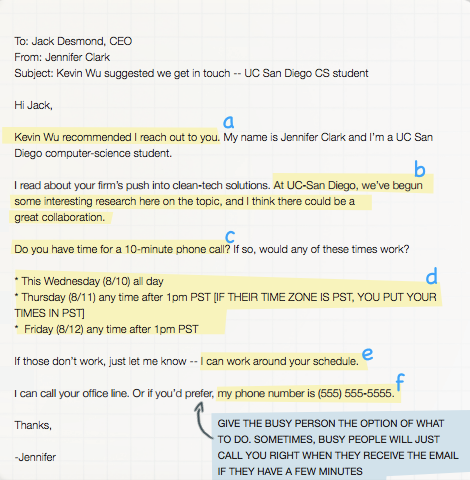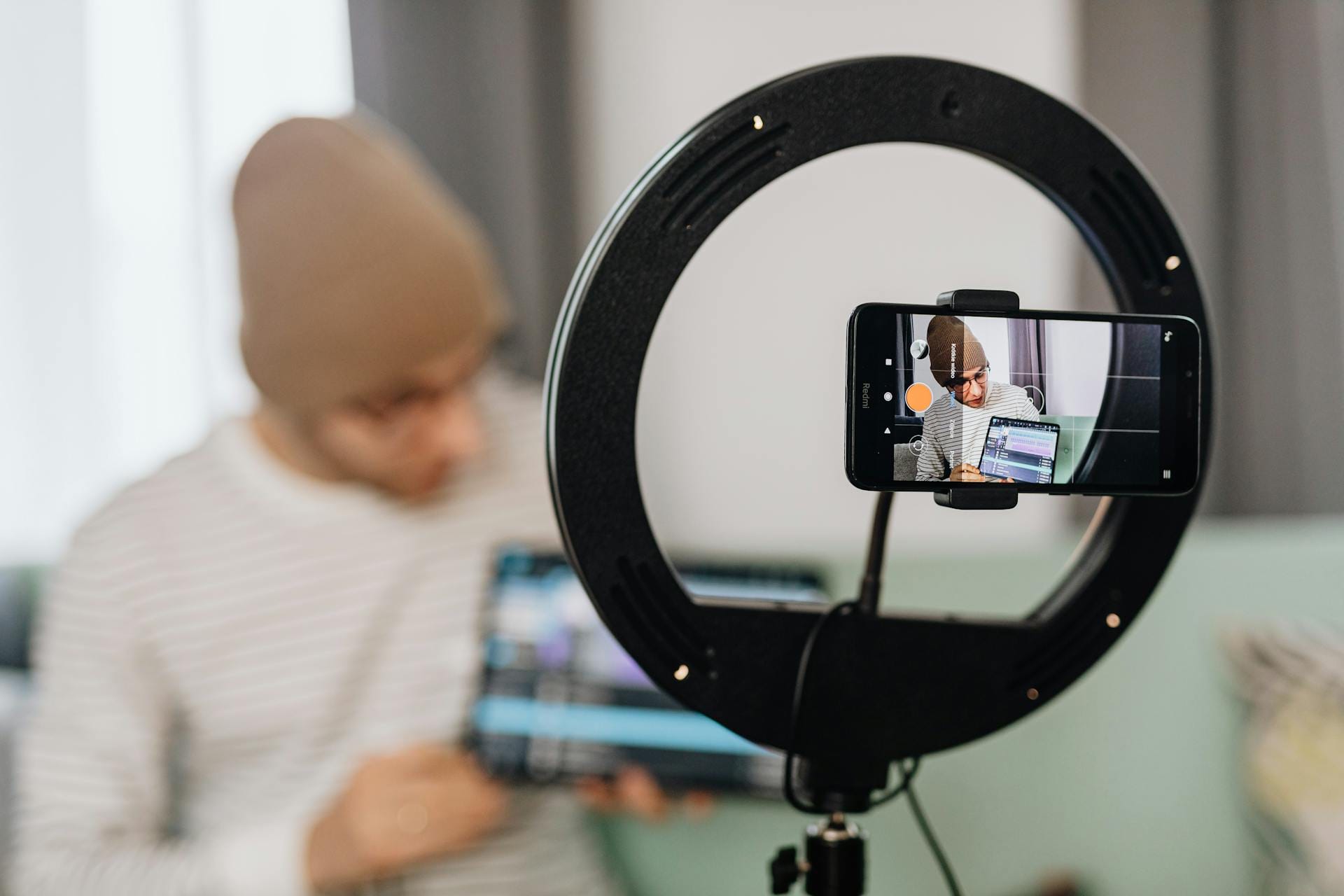
Build your Brain Trust: Simple email script to get a meeting with anyone
Let’s spend some time diving into one of my fantasies: How I would run the boarding process of a plane.
That’s right. Some of you fantasize about women or men or being a millionaire. I methodically plan how I would improve the efficiency of an airport terminal.
See, after traveling a lot, I’ve concluded that the most dreadful elements of society — the worst of the worst — come out when people are boarding a plane.
Here is what would happen.
I would have no mercy. People’s instinctive tendency is to crowd and congregate, blocking the pathway, like in this picture I recently took at JFK:

Passengers would line up military style. I would organize by height, weight, and for fun, clothing colors of the rainbow.
If someone tried to skip the line and board before their row was called, they would suddenly become an example to the entire line.
I would hold up their ticket, pretending to be innocently curious, and loudly exclaim, “EXCUSE ME? DID YOU KNOW THERE IS A LINE? OH YOU ADORABLE THING. THE LINE ACTUALLY STARTS BACK THERE.” They would slink away, avoiding eye contact. There would be no more line cutters.
I would go beyond my job duties.
As any traveler knows, the real transgressions begin when people actually get on the plane. People stop in the middle of the aisle, spending 80-90 seconds inexplicably pawing through their bags and blocking the TWO HUNDRED PEOPLE behind them.
In my world, this problem would not exist.
I would walk through the plane with a god damned toilet plunger through the aisle. Clear the aisles, people. What seems disconcerting would ultimately be welcomed and applauded as the plane boarded 25 minutes early.
JetBlue would wonder why their turnaround time has plummeted by 40% at this one particular gate at JFK. They would spend half a million dollars on a research study, which would lead them back to one gate agent.
Gate agent Sethi.
Damn, that’s how you do it.
We all have fantasies. This week, we’re going to examine how the subtle things we do — the emails we send, the ads we see every day — influence us. Like my airport fantasy, you get to be the expert.
To start, here’s a salon I walked past the other day. Would you go here?

It comes down to a simple question: Would you get your haircut at this unisex hairstylist?
If you’re a man, maybe — if it was close to your house. But if you’re a woman? NO — of course not.
Forget about the sign. Who really wants their haircut at a unisex salon? Very few people, especially women — which means they might as well call it “Cheap Haircuts For Guys.”
Everything about it practically screams “this isn’t for you.”
But great ads speak directly to a reader. They make people want a product, not just tell them the cheapest way to get it. No one wants a unisex salon, because no one has unisex hair.
Let’s take a look at a different example. Here’s the homepage for a barber shop in Brooklyn:

Nice photo. Good-looking guy with flawless hair getting a beard trim. I wouldn’t be surprised if they served him a whiskey when he walked in here.
This hits home. It makes me want it. (In fact, I’d probably be willing to set aside price and focus on the cut.)
This is what so many others miss. They instinctively begin talking about discounts and price, as if that’s the only lever they have. It’s like me walking up to someone I want to meet and saying, “BUT I’M A REALLY NICE GUY! I CAN TAKE YOU OUT TO A NICE DINNER! HAVE YOU BEEN TO MASA? IT’S SO GOOD. EXPENSIVE, YEAH, BUT I COULD TAKE CARE OF YOU.”
Ugh. Such a turnoff.
Effective communication means connecting with your audience. It’s about meeting your audience where they are, being playful, and being candid about what you want, as well as what you can offer.
And you do not have to mention price up front!
I know it seems obvious. But if you pay attention, this simple idea can change your life.
For example, say you needed to email an important person out of the blue.
(Why would you want to email someone out of the blue? You and I have heard people talking about the power of building relationships. Imagine having a “brain trust” of people you could call on and ask for help, people who want you to succeed. You start with one person. And yes — people want to help you if you approach them in the right way.)
This is trickier than you might think. We know people who’ve tried to schedule a call with a busy person, and after repeated back-and-forth scheduling emails, the busy person simply gave up and said, “Sorry, I just don’t have time.”
Your goal is to minimize the back and forth and make it easy for the busy person to find time to talk to you.
Like this blog post? Learn how to create amazing content like this that attracts and engages your target buyers with our FREE Ultimate Guide To Remarkable Content.
Here are a five important things to keep in mind when you write the email:
1. You (the lower-status person who wants to talk to the busy person) should initiate the call, but provide your phone number in case they want to speak to you right now
By the way, don’t get offended by my use of the phrase “lower-status.” Let’s be candid: If you want something from someone else, in this situation, you are lower-status.
Whether it’s less famous, less wealthy, less successful, less important, or less busy, that’s just the way it is. Remember, YOU want something from THEM. It’s important to recognize this and work around the busy person’s schedule. That means:
2. Don’t make them think
You can’t ask them to work around your schedule, but at the same time you want to make it easy for them to say, “yes.” Don’t make them come up with a bunch of times that work. Instead offer them a couple of different options for times that would work for the call. That respects their schedule, and leaves the final decision in their hands, but doesn’t require a lot of thought.
3. Send the email when they’re most likely to read it
You wouldn’t believe how many people email complex questions to a busy person on a Friday afternoon.
Why? Why would you send something requiring lots of work to someone on their way out for a weekend?
The answer: “Oh…I didn’t think about that.”
If you don’t think about the busy person, you lose.
To maximize your chance of getting a response, email a busy person when they’re most likely to read and process it.
In other words:
- Do NOT email a busy person on Monday morning
- Do NOT email a busy person on their birthday (unless it’s a simple happy birthday message)
Instead, think when they’re most receptive. Maybe at lunch? Maybe Sunday night when they’re prepping for their week?
4. Formatting
Bad formatting can scuttle even the most helpful, interesting email.
Use paragraph breaks and bullet points liberally to make your email easy to read.
Also, send it in plain text rather than HTML so it can be easily read on a mobile device. For VIP emails, I like to send myself a test to make sure it’s readable and any URLs are clickable.
5. Use correct grammar and spelling
Lazy typos signal laziness. Use proper punctuation and capitalization.
Don’t use lower case “i”s or texting abbreviations. An email should be more polished than a text message.
Always proofread your email. Let the reader focus on your well-crafted message, not the fact that you still do not know the difference between “its” and “it’s.”
You wouldn’t think I’d need to say this, but I do.
If you keep those 5 things in mind, you’ve got a great shot at getting a positive response, but let me give you an example of these principles in action.
Let’s say a college student (low status) needs to email the CEO of a business (high status). A great email would look like this:

There are a few things I want to call your attention to in this email.
- The writer quickly introduces their referral and affiliation. If you have a connection to the busy person, always put it right up front.
- For the purposes of this email, the pitch is irrelevant. Be specific that you have a reason for emailing, but keep it brief. The point of this email is coordinating the phone call.
- Always specify a short time period. A busy person is less likely to object to a minimal time commitment to a total stranger.
- Offer them a few choices, and try to provide one all day option, as well as two narrowly defined times. The “after 1pm” suggestions help busy people cope with the paradox of choice.
- Explicitly acknowledge that they are higher-status and politely offer to honor their schedule.
- Give the busy person the option of what to do. Sometimes, busy people will just call you right when they receive the email if they have a few minutes.
With a couple of tweaks, this email can be used to email any busy person in any situation.
So today I have a challenge for you. Think of one person you could send this to today to build a relationship that would help your career, your hobbies, or your business.
Let me know who it would be in the comments below. Bonus points if you actually email them and tell us how they respond.
Want to build a business that enables you to live YOUR Rich Life? Get my FREE guide on finding your first profitable idea.



